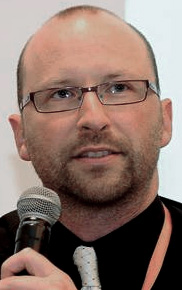

 I've written several posts on Cuba's user-deployed street networks (SNET), the largest of which is SNET in Havana. (SNET was originally built by the gaming community, but the range of services has grown substantially). My posts and journalist's accounts like this one describe SNET, but a new paper presents SNET measurement data as well as descriptive material.
I've written several posts on Cuba's user-deployed street networks (SNET), the largest of which is SNET in Havana. (SNET was originally built by the gaming community, but the range of services has grown substantially). My posts and journalist's accounts like this one describe SNET, but a new paper presents SNET measurement data as well as descriptive material.
 Consumers are embracing VoIP services now more than ever as they get used to calling over Internet application services such as Skype, Facetime, and Google Hangouts. Market Research Store predict that the global value of the VoIP services market is expected to reach above USD140 billion in 2021, representing a compound annual growth rate of above 9.1% between 2016 and 2021.
Consumers are embracing VoIP services now more than ever as they get used to calling over Internet application services such as Skype, Facetime, and Google Hangouts. Market Research Store predict that the global value of the VoIP services market is expected to reach above USD140 billion in 2021, representing a compound annual growth rate of above 9.1% between 2016 and 2021.
 In case you missed it (you probably didn't), the Internet was hit with the Monday blues this week. As operator-focused lists and blogs identified, "at 17:47:05 UTC yesterday (6 November 2017), Level 3 (AS3356) began globally announcing thousands of BGP routes that had been learned from customers and peers and that were intended to stay internal to Level 3. By doing so, internet traffic to large eyeball networks like Comcast and Bell Canada, as well as major content providers like Netflix, was mistakenly sent through Level 3's misconfigured routers."
In case you missed it (you probably didn't), the Internet was hit with the Monday blues this week. As operator-focused lists and blogs identified, "at 17:47:05 UTC yesterday (6 November 2017), Level 3 (AS3356) began globally announcing thousands of BGP routes that had been learned from customers and peers and that were intended to stay internal to Level 3. By doing so, internet traffic to large eyeball networks like Comcast and Bell Canada, as well as major content providers like Netflix, was mistakenly sent through Level 3's misconfigured routers."
 No baby boomers had been born when Congress enacted Title II of the Communications Act in 1934 as a means of regulating the Bell telephone monopoly, and the first Millennials were in elementary school when that monopoly was broken up in 1983. Title II was set to die along with plain old telephone service until the Obama administration decided Title II should be used to implement net neutrality -- the principle that consumers should have reasonable access to internet functionality.
No baby boomers had been born when Congress enacted Title II of the Communications Act in 1934 as a means of regulating the Bell telephone monopoly, and the first Millennials were in elementary school when that monopoly was broken up in 1983. Title II was set to die along with plain old telephone service until the Obama administration decided Title II should be used to implement net neutrality -- the principle that consumers should have reasonable access to internet functionality.
 RIPE held its 75th meeting in Dubai in mid-October. As usual, there was a diverse set of presentations covering a broad range of activities that are taking place on today's Internet. The topics include issues relating to network operations, regulatory policies, peering and interconnection, communications practices within data centers, IPv6, the DNS, routing and network measurement. If that's not enough, the topic of the Internet of Things has been added as a Working Group in the RIPE pantheon. If you add address policy, database and RIPE services to the mix, you get a pretty packed five days with topics that would appeal to most Internet folks.
RIPE held its 75th meeting in Dubai in mid-October. As usual, there was a diverse set of presentations covering a broad range of activities that are taking place on today's Internet. The topics include issues relating to network operations, regulatory policies, peering and interconnection, communications practices within data centers, IPv6, the DNS, routing and network measurement. If that's not enough, the topic of the Internet of Things has been added as a Working Group in the RIPE pantheon. If you add address policy, database and RIPE services to the mix, you get a pretty packed five days with topics that would appeal to most Internet folks.
 In 1990, Teledesic was formed to deliver satellite-based Internet service. Cellular pioneer Craig McCaw, Microsoft co-founder Bill Gates and Saudi Prince Alwaleed bin Talal were early investors and Boeing was both an investor and the prime contractor. Teledesic hoped to offer global Internet connectivity using a constellation of 840 satellites in low-Earth orbit (LEO) at an altitude of 700 km... Teledesic failed. Twenty seven years later three companies SpaceX, OneWeb and Boeing are trying to do what Teledesic could not do. Will they succeed?
In 1990, Teledesic was formed to deliver satellite-based Internet service. Cellular pioneer Craig McCaw, Microsoft co-founder Bill Gates and Saudi Prince Alwaleed bin Talal were early investors and Boeing was both an investor and the prime contractor. Teledesic hoped to offer global Internet connectivity using a constellation of 840 satellites in low-Earth orbit (LEO) at an altitude of 700 km... Teledesic failed. Twenty seven years later three companies SpaceX, OneWeb and Boeing are trying to do what Teledesic could not do. Will they succeed?
 On the 25th of September, the northern autonomous region of Iraq known as Kurdistan voted to become an independent country. This vote has led to a current standoff between the central Iraqi government and the Kurdish Regional Government (KRG), with the Kurds threatening to cut off internet service into Iraq in retaliation for any punitive measures inflicted by Baghdad on the KRG. The following analysis was written by Doug Madory of Oracle Dyn after ISIS took control of Mosul, Iraq in 2014. It describes how the internet of Iraq came to be dependent on international connections through telecoms based in Kurdistan.
On the 25th of September, the northern autonomous region of Iraq known as Kurdistan voted to become an independent country. This vote has led to a current standoff between the central Iraqi government and the Kurdish Regional Government (KRG), with the Kurds threatening to cut off internet service into Iraq in retaliation for any punitive measures inflicted by Baghdad on the KRG. The following analysis was written by Doug Madory of Oracle Dyn after ISIS took control of Mosul, Iraq in 2014. It describes how the internet of Iraq came to be dependent on international connections through telecoms based in Kurdistan.
 In 2015, ETECSA announced/leaked a plan to make ADSL service available in 50% of Cuban homes by 2020. I was skeptical. Doing so would mean investing a lot of money for obsolete technology between 2015 and 2020. They have recently announced the availability of ADSL connectivity at homes in portions of seven cities and, by December, they say some home connectivity will be available in every province.
In 2015, ETECSA announced/leaked a plan to make ADSL service available in 50% of Cuban homes by 2020. I was skeptical. Doing so would mean investing a lot of money for obsolete technology between 2015 and 2020. They have recently announced the availability of ADSL connectivity at homes in portions of seven cities and, by December, they say some home connectivity will be available in every province.
 Three companies, SpaceX, OneWeb and Boeing have announced ambitious plans to put thousands of Internet-service satellites in non-geostationary low-Earth orbit (NGSO) and other companies like ViaSat and SES are currently operating hundreds of communication satellites in medium-Earth and higher, geostationary orbits. With so many satellites orbiting in different planes and at different altitudes, there are bound to be frequent "inline events"...
Three companies, SpaceX, OneWeb and Boeing have announced ambitious plans to put thousands of Internet-service satellites in non-geostationary low-Earth orbit (NGSO) and other companies like ViaSat and SES are currently operating hundreds of communication satellites in medium-Earth and higher, geostationary orbits. With so many satellites orbiting in different planes and at different altitudes, there are bound to be frequent "inline events"...
 Most service providers are aware that there needs to be a simple, fast way to identify subscribers. Unfortunately, in reality, mapping IP addresses back to subscribers for identification purposes - such as lawful interception requests or acceptable use policy violations - can be complicated. It usually involves analyzing data sets, completing manual audits, or reliance on multi-step solutions.
Most service providers are aware that there needs to be a simple, fast way to identify subscribers. Unfortunately, in reality, mapping IP addresses back to subscribers for identification purposes - such as lawful interception requests or acceptable use policy violations - can be complicated. It usually involves analyzing data sets, completing manual audits, or reliance on multi-step solutions.